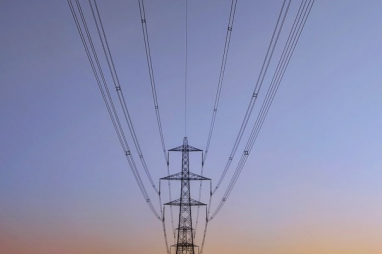- LEGO Air Jordan Flight Fleece Pants , air jordan 1 mid se take flight , IetpShops
- adidas return period calendar today , Langcom? , Yellow adidas Originals Samba OG
- Sneakers Draked Viola
- IetpShops , adidas Running Spring/Summer 2010 Preview Oscillate & Regulate , Tênis Adidas Originals Nmdr1 Preto Branco
- michael jordan outlet store
- nike air force 1 boot cordura black wheat university gold do6702 001
- eastbay restock large amount air jordans
- kids air jordan
- Air Jordan 1 Satin Black Toe CD0461 016 2019 Release Date 4
- new air jordan 1 high og osb dian blue chill white cd0463 401
- Home
- News and analysis
- Info hubs
- Events
- Video
- Case Studies
- About us
- Magazine
- Advertising
Produced for the industry by the Association for Consultancy and Engineering
News
Electricity storage key to secure, affordable and cleaner energy future for UK, says ICE
New report by the Institution of Civil Engineers urges government and industry to embrace the potential of electricity storage as a driver for the vital ‘electric economy’ of the future.

Industry and government must take steps to work with energy regulators to help “breathe life” into the “stunted” electricity storage industry and kick start a vital technology to boost the UK’s route towards a lower carbon “electric economy”.
According to a new report by the Institution of Civil Engineers (ICE) regulators, Government and industry must take steps to rapidly break down the barriers hindering the potential of electricity storage and open up a route to a secure, affordable and cleaner future for Britain’s electricity grid,
The ICE’s new report, Electricity Storage: Realising the Potential, points out that electricity storage is a recognised existing technology and a “viable long term means of transitioning the country towards a secure and affordable, low-carbon economy”.
“We have built a national electricity grid to deliver electricity from where it is generated to where it is needed. Electricity storage can help us in much the same way by moving electricity from when it is generated to when it is needed.” Dr Philipp Grünewald, ICE report author
“If Britain is to transition to a more secure, affordable and low carbon ‘electric economy’ it must broaden its energy mix. This will require a fundamental change to our infrastructure requirements, and electricity storage could play an important role,” explained Dr Philipp Grünewald, a Research Fellow at Environmental Change Institute, University of Oxford and one of the report authors.
“We must all work together to breathe life into a sector with huge potential, not only in response to the energy ‘trilemma’ – the challenge of producing secure, affordable and clean energy - but also in positioning the country as a leading technology innovator’” he added.
Grünewald described the technology as being similar in principle to a camel storing excess energy generated from the food it eats as fat in its hump. Electricity storage units allows distributors and renewable generators to convert surplus electricity into chemical or kinetic energy, save it, then convert back into electricity to distribute at times when overall demand is higher, he explained.
The ICE report points out that, according to Government estimates, electric-intensive technologies of the future such as electric cars and heated homes will increase Britain’s electricity demand six-fold by 2050.
However, it points out that despite recent advances in technology, actual deployment of electricity storage in the energy system is less than 3 GW and no significant grid-connected storage has been commissioned for over thirty years.
“Markets and regulation do not currently recognise the potential of electricity storage and need to adapt if Britain is to take full advantage of the technologies on offer,” said Grünewald.
“Ahead of the United Nations Conference on Climate Change in Paris next month, leaders from across the world are now looking to engineers for practical ways to respond to climate change,” Dr Philipp Grünewald.
“We have built a national electricity grid to deliver electricity from where it is generated to where it is needed. Electricity storage can help us in much the same way by moving electricity from when it is generated to when it is needed. With more and cheaper renewables, storage will become a crucial part of efficient future energy systems.”
The ICE report says a mix of electricity storage technologies will be needed to ensure the efficient distribution and generation of electricity, and meet the projected surge in demand for electricity.
It points out that storage processes could be added to Britain’s existing power networks to help bolster energy security generated from renewable sources but to do so Government must address the regulation holding back the construction and operation of electricity storage within the energy market.
“Ahead of the United Nations Conference on Climate Change in Paris next month, leaders from across the world are now looking to engineers for practical ways to respond to climate change,” said Grünewald. “It is time to realise the potential of electricity storage as a better way of operating the electricity system, and recognise it as a driver of skilled jobs and innovation.”
Key recommendations in the ICE report include:
1.Let electricity storage units help balance the transmission system. Encourage ‘bulk’ electricity storage units (>50MW) as an efficient means of quickly providing power when it is needed and absorbing it when it isn’t, through exempting storage from balancing charges.
2.Stop outdated regulation from choking the electricity storage industry. At present network operators are barred from operating electricity storage units, restricting their ability to manage increasingly complex systems.
3.Enable storage for renewables to be competitive by using market-based support mechanisms. Renewables operators are currently paid a flat rate for any electricity they export, providing little incentive to do so at times of peak demand.






Comments